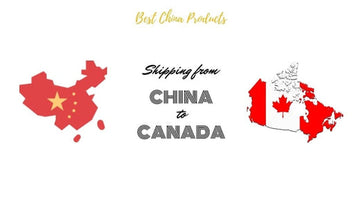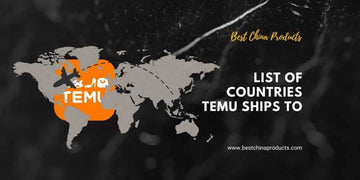Imagine slipping into a Patagonia jacket or pullover. It's more than just wearing a piece of clothing; it's a statement.
A statement of quality, environmental consciousness, and a love for adventure. But have you ever paused and asked, "Where is this Patagonia piece made?"
Well, I'm here to unveil that mystery.
Understanding the Brand: The Patagonia Legacy
Firstly, let's dive a bit into the brand's background. Founded by Yvon Chouinard, Patagonia began as a modest venture selling tools for climbers.
Today, it stands tall as a global beacon of environmental activism, sustainable practices, and, of course, top-notch gear.
So, Where Are Patagonia Clothes Made?

Patagonia's products aren't limited to a single corner of the world. They're crafted across continents. Here’s what I've discovered:
Global Supply Chain: Patagonia crafts its products in places like the U.S., Vietnam, China, Sri Lanka, among others. This international approach allows the brand to source the best materials and workmanship from across the globe.
Transparent To The Core: Patagonia isn't one to hide. They proudly share where and how their products are made. This isn't just about brand image; it’s about honesty, accountability, and giving you, the consumer, a clear view of what you're buying into.
Not Just Any Factory Will Do: Regardless of where Patagonia's products are birthed, they ensure that each factory aligns with their core values, respecting workers' rights and our beautiful planet.
Is Patagonia a Sustainable Brand?

Patagonia’s emphasis on sustainability is not just a branding tactic; it’s woven into the fabric of their operations.
72% of Patagonia's products are crafted using planet-friendly ingredients. This includes recycled nylon and polyester, a clear testament to their dedication to reducing environmental harm. But it’s not just about recycling.
Patagonia delves deep into material science, using uniquely structured carbon molecules in their polyester. This innovation ensures that their products aren't just sustainable but also have a prolonged lifespan.
Beyond Materials: Sustainability isn’t confined to just materials. Every product they design, whether it's an everyday tee or technical mountaineering gear, embodies several core principles:
- Repairability Over Replacement: The brand believes in creating products that can be repaired rather than replaced. This philosophy reduces waste and encourages buyers to invest in longevity.
- Durability at Its Core: Patagonia products are built to withstand the test of time and rigorous outdoor adventures. It's not just about resisting wear and tear but thriving through it.
- Simplicity and Minimalism: In an age of excess, Patagonia opts for a minimalist approach, designing products that are streamlined and free from unnecessary frills.
- Versatility and Functionality: From scorching desert treks to alpine ascents, Patagonia gear is engineered for diverse conditions, ensuring that consumers get the most utility out of every product.
- Comfort Through Intelligent Design: Recognizing that sustainability shouldn’t compromise comfort, they focus on efficient weight distribution in their products, ensuring that users are comfortable in varied terrains and activities.
How Does Patagonia Maintain Consistent Quality Across Global Production Units?

Patagonia doesn’t own its factories, but their commitment to uncompromising quality remains steadfast.
Collaborating with over 45 independent factories in 16 countries, the brand ensures each aligns with its stringent quality and ethical benchmarks.
This global network might seem daunting, but with a strategic partnership initiated with GT Nexus in 2005, Patagonia harnesses technology to streamline trade and logistics processes.
This not only enhances operational efficiency but also ensures a consistent brand standard.
So, while they might not own the manufacturing units, their meticulous oversight and technological integration mean that every Patagonia product, irrespective of its origin, stands as a testament to the brand's dedication to excellence.
Is Patagonia Made in the USA?

Patagonia products are manufactured in various locations worldwide. While some items might be made in the USA, not all of them are.
For specific information about where a particular Patagonia item is made, it's best to check the product's label or visit Patagonia's official website.
What Goes Into Making Patagonia Jackets?

Synonymous with style and functionality, Patagonia's jackets are masterpieces. Produced primarily using top-tier polyester, these jackets strike a balance between aesthetic appeal and pragmatic design.
With polyester sources ranging from petroleum to sugar, these jackets mirror Patagonia’s commitment to sustainable fashion.
Is Patagonia Owned by Nike?

Dispelling the myths, no, Nike does not own Patagonia. Yvon Chouinard's brainchild, Patagonia remains an independent entity.
While there have been murmurs of Nike's interest in acquisition, Patagonia’s trajectory remains untouched, staying true to its founding principles and vision.
Is Patagonia Made in China?

Yes, Patagonia products are indeed manufactured in China, among other locations around the world. Patagonia's relationship with Chinese manufacturing units is an integral part of their supply chain.
The brand's decision to partner with factories in China is rooted in the country's vast manufacturing expertise and capacity to produce high-quality outdoor apparel and gear.
It's also worth noting that while the "Made in China" label is sometimes associated with mass production or lesser quality in some consumer minds, this is not the case for Patagonia.
Their Chinese manufacturing partners are selected based on their ability to meet and maintain the high-quality and ethical standards that Patagonia demands.
Identifying Genuine vs. Counterfeit Patagonia Products
It's an unfortunate reality of today's market: where there's a popular, quality brand, there's often a counterfeit attempting to mimic it. When you're investing in a piece of Patagonia gear, you deserve the real deal. Here's how to discern authentic Patagonia products from the imposters:
- Quality and Craftsmanship: Genuine Patagonia products are known for their impeccable quality. Meticulous stitching, durable materials, and a flawless finish are trademarks. Counterfeits often cut corners, leading to subpar quality and visible defects.
- Labels and Logos: Authentic Patagonia items will have clear, crisp labels and logos. Examine the logo carefully. Counterfeits might have slight discrepancies in the design or color. The label should also include details about the material and care instructions that align with Patagonia's standards.
- Zippers and Hardware: Patagonia often uses high-quality zippers like YKK. If you see a generic or poorly made zipper, be wary.
- Price: If a deal seems too good to be true, it probably is. Counterfeit products often lure customers with drastically reduced prices.
- Purchase from Reputable Sources: Always buy from Patagonia's official website, certified retailers, or well-known outdoor equipment stores. Avoid unofficial online marketplaces where counterfeit sellers might lurk.
FAQs on Patagonia's Production and Authenticity
Where are Patagonia products made?
Does Patagonia disclose its factory details?
How can I be sure my Patagonia product is genuine?
Why does Patagonia manufacture globally instead of just in one country?
Is Patagonia committed to sustainability even with a global production chain?
Wrapping Up
In an age where brand transparency is increasingly valued, Patagonia’s open discourse on its production practices sets a benchmark.
Through its unwavering commitment to quality and sustainability, Patagonia exemplifies responsible fashion, urging us to ponder where our clothes come from and the ethos of the brands we support.
Regards






